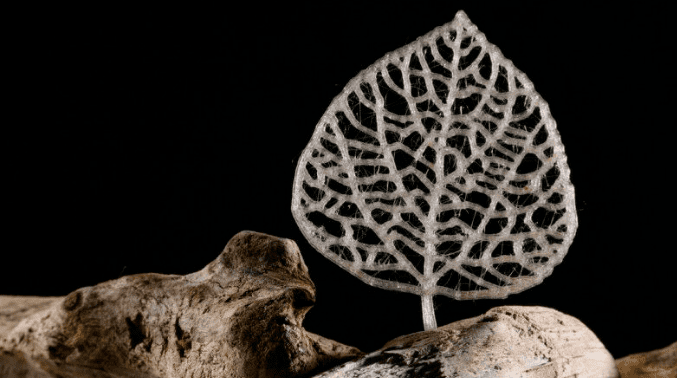Moving away from fossil fuels and avoiding the accumulation of plastics in the environment are key to addressing the challenge of climate change. Recently, researchers led by Professor Jeremy Luterbach of the Institute of Basic Sciences at the Swiss Federal Institute of Technology in Lausanne have developed a biomass-derived plastic similar to PET (polyethylene terephthalate) that meets the criteria for replacing several existing plastics while also being more environmentally friendly.
Traditional plastics are so widely available because they combine many advantages such as low cost, thermal stability, mechanical strength, processability and compatibility. Any plastic alternative must meet or exceed these advantages, a task that has always been very challenging.

3D printed "leaves" made from new bioplastics
Luterbach said, "We basically just 'cooked' wood or other inedible plant material, such as agricultural waste, with cheap chemicals to produce plastic precursors in one step." By maintaining the integrity of the sugar structure in the molecular structure of the plastic, the chemical method is much simpler than the current way of producing plastic substitutes.
The technique is based on a 2016 discovery by Luterbach and colleagues: adding an aldehyde stabilizes certain parts of the plant material and avoids damaging them during the extraction process. By repurposing this chemical, the researchers were able to reconstruct a new and useful bio-based chemical as a plastic precursor.
By using a different kind of aldehyde - glycolic acid rather than formaldehyde - we can simply use 'sticky ' groups to sandwich the sugar molecules in between so they can act as building blocks for plastics."
This simple technology is capable of converting up to 25% of agricultural waste or 95% of pure sugar into plastic.
The all-around properties of the new plastics allow them to be used in a variety of applications such as packaging, textiles, pharmaceuticals, electronics and more. Researchers have made packaging films, fibers that can be made into clothing or other textiles, and fine filaments for 3D printing.
"This plastic has very exciting properties, especially in applications such as food packaging." Luterbach said it is unique in the presence of an intact sugar structure, making the plastic very easy to manufacture and easily degradable.

